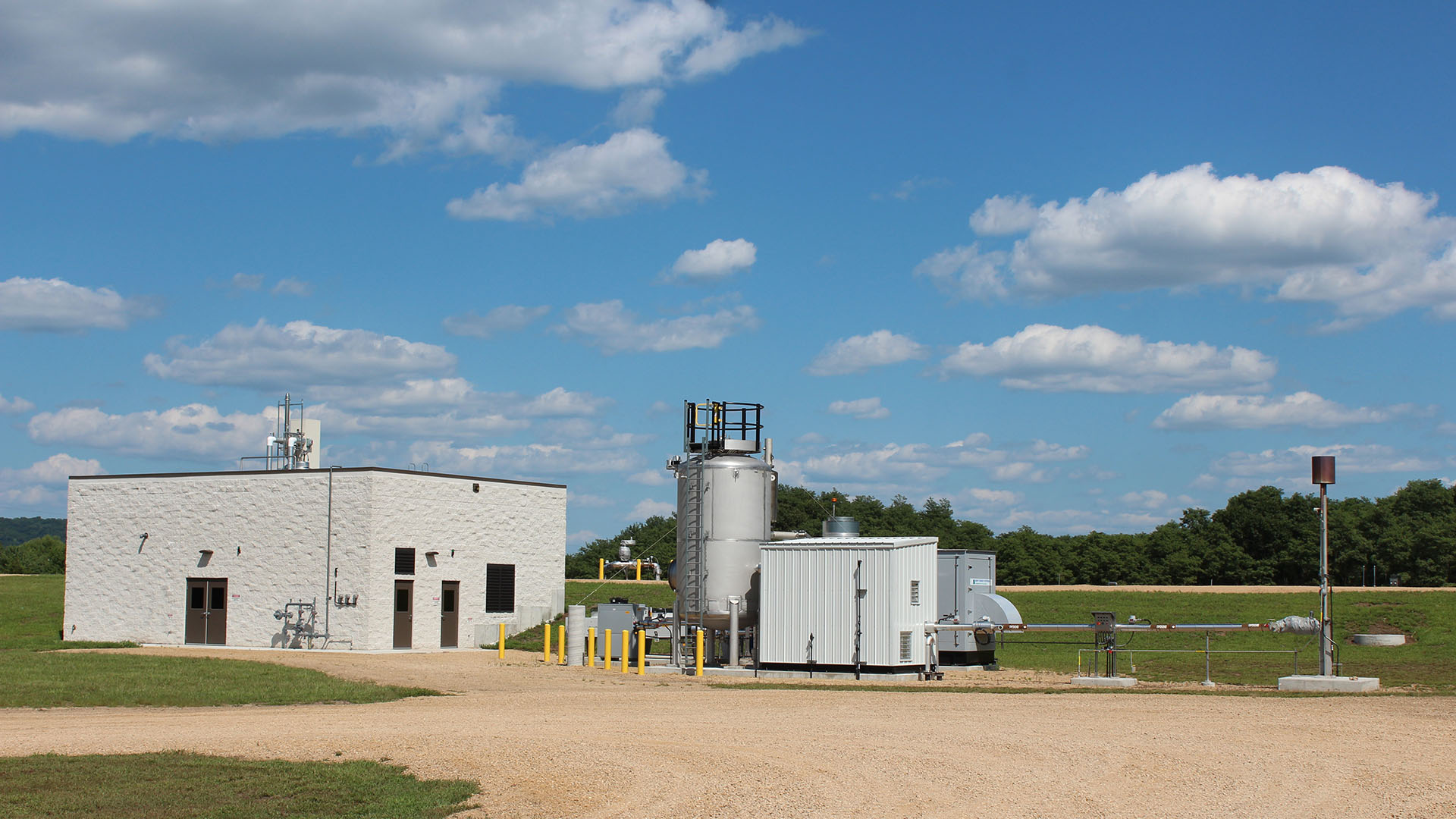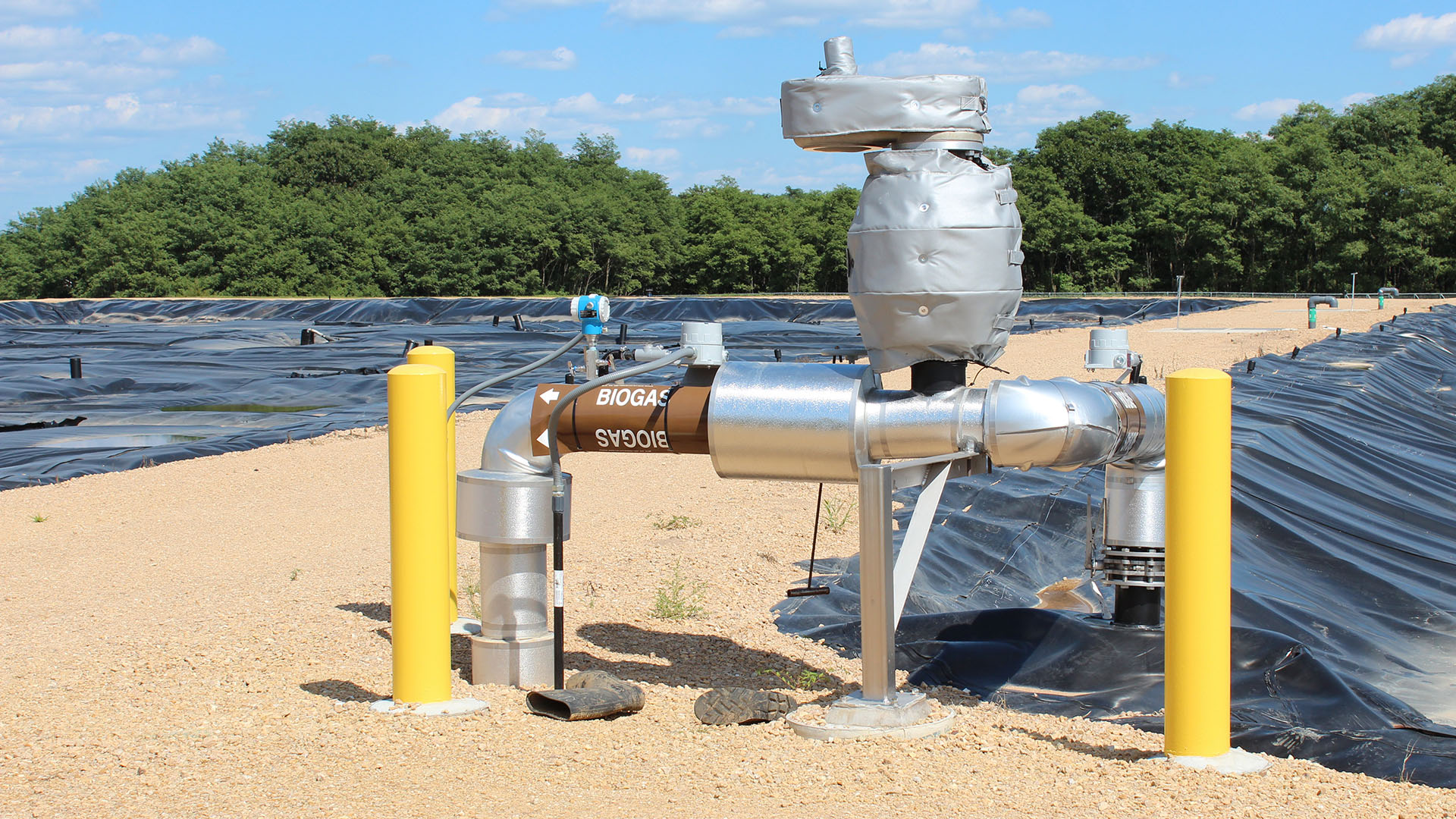Awards: ACEC Wisconsin Engineering Excellence Best of State Award; ACEC National Recognition Award
Meister Cheese Company constructed an aerobic wastewater treatment plant (WWTP) to treat its cheese and whey processing waste. High-strength wastes are a by-product of production and because the aerobic WWTP cannot effectively treat them, these wastes were segregated from the normal flow, hauled, and land-applied onto farm fields. Even with separation of the high-strength wastes, the aerobic WWTP routinely produced waste sludge, which also required almost daily application onto farm fields. Furthermore, the electrical energy to run the aerobic WWTP was significant. Meister Cheese Company contemplated increasing cheese production, which would increase wastewater loadings and volumes to the WWTP.
Because of costs, ongoing logistics, and pending questions about future permitting of land application of waste sludge during winter months, Meister Cheese Company desired to reduce or eliminate hauling of its waste.
The principal solution was to expand the WWTP capacity by providing enhanced treatment of the high-strength waste, and additional treatment of waste through the aerobic process. Accordingly, we completed a feasibility study, facility planning, permitting assistance, and design of improvements to add anaerobic treatment lagoons upstream of the aerobic process. The anaerobic lagoons pre-treat all of the wastewater from the production facilities. A particular advantage of anaerobic treatment is the production of biogas, which can be used for energy production. The process designed uses biogas from the anaerobic lagoons in an engine-generator (cogeneration) to produce electricity to offset electricity required to run the WWTP, and to produce heat to maximize the efficiency of the anaerobic treatment process. When operating at design capacity, the cogeneration system generates enough electricity to run the entire WWTP and produces enough heat to keep the lagoons in the optimal temperature range throughout the year.
This project is unique because industrial anaerobic lagoon systems are typically either low-rate, unmixed, and unheated, or high-rate; however, the lagoons at Meister Cheese Company’s WWTP are a hybrid of higher rate processes that are generally heated and mixed, but with short detention times, and lower rate processes that have longer detention times, but are not heated and mixed.
Through these improvements, Meister Cheese Company has all but eliminated its need to haul and land-apply its wastes, and this has reduced costs and improved the Company’s local environmental stewardship. Meister Cheese Company has been producing electricity from biogas to offset the energy needs of the WWTP. Additionally, based on 2017 aerobic WWTP electricity use and United States Environmental Protection Agency estimates of an equivalent of 1.64 pounds of CO2 per kWh of electricity generated, the company is expected to reduce its carbon footprint by approximately 1,000 tons per year.
Back to Project Gallery


